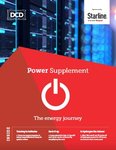2020 will undoubtedly be marked in the history books as one of the most disrupted, poignant periods of change in recent decades. During these testing times, companies have increasingly turned to technology, arguably more so than ever before, to ensure business continuity and staff safety as they adapt to the changes of the new normal.
Many leading organizations around the world are reviewing the future of office working and remote work. Google and Facebook, for example, have said staff can work from home until the end of the year, while Twitter has announced they may continue to do so forever. As dependency on digital infrastructure increases, companies undoubtedly need to invest in their critical IT systems to enable a highly available home working environment and to ensure operational continuity.
New tools and capabilities have given us more flexibility than ever. However, underneath these systems lies a lack of ability to articulate the benefits of key technologies, where professionals seemingly fail to engage the right stakeholders within businesses. Specifically, considering the data center and other B2B technology sectors, this fundamental breakdown of communication and clarity can result in archaic, lazy and out-dated systems continuing to manifest themselves in critical infrastructure.
Technology is ever changing
According to a recent report from Dell and Intel, 55 per cent of the world’s population currently lives in urban areas, which will grow to 68 per cent by 2050. At the heart of this lie the ‘megacities’, which have more than 10 million inhabitants. By 2030, it is predicted that there will be 42 megacities across the globe, up from just ten in 1990. This indicates not only a phenomenal change in urbanization and to the demands placed on both the environment, but also an industry-defining opportunity to deliver real value within evolving digital infrastructures.
With the world becoming ever more dependent on data centers and digitization, tools like remote management, IoT and AI offer great value and ensure that even when access to site is unavailable, business can continue in the new normal. Moreover, many companies around the globe today have little choice other than to move with the times, as quickly as the technology itself is developing. Here a key piece of this puzzle is the role of the consultant or partner (most often, third party) who delivers a unique, bespoke approach to bringing companies up-to-speed, quite literally, via digital transformation.
Here, I believe the role of the consultant is to advise, specify and design the most cost-effective, efficient and resilient technology systems to help companies meet their business objectives. For our organization, it also means delivering a tangible return on investment (ROI), yet this isn’t always an easy path to walk…
Today we continue to see poorly specified environments where lazy consultants have replicated pre-existing infrastructure designs and provided organizations with a solution that cannot meet the needs of its intended purpose.
Every customer is different, in the same way that every consultant or partner will differ from the next. Yet what is fundamental to understand, however, is that each party can bring unique information and opportunities to develop a working relationship in which the two can learn from one another, delivering common good as an end result. Furthermore, in most cases, this common ‘good’ can be derived as optimum uptime, a concise and clear ROI, and business continuity for any eventuality.
Legacy vs innovation
As technologies continue to evolve and provide new capabilities, it is not only our job as consultants to specify and recommend them, but to use the insights we're given to do a better job for the customer. In short, we must educate them and show them the real benefits of technological innovation.
It’s not always easy to encourage internal stakeholders to take a leap of faith where technical teams are concerned, but this is where the role of the consultant is pivotal – especially in clearly demonstrating value and the opportunity to drive innovation or increase productivity. Some organizations will focus solely on the financials, others on the needs of the IT, but bridging this gap is essential to improve what’s become an out-dated means of upgrading legacy systems.
Moreover, this also requires involving and educating different decision makers from the word go. From procurement to IT managers and operators, this approach not only adds great value, it shows how the RFP process can be improved for a greater outcome or ROI.
The case for utilizing and embracing new-found technologies is clear, it is about adaptability, changing the conversation to focus on outcomes and embracing the new. And in terms of proof points, today, there are many examples of how products improvements offers the user a host of new benefits.
Take, for example, lithium-ion (Li-ion) and VRLA batteries: On the one hand, Li-ion may be seen as a no-brainer for those focused on long-term outcomes. With a lifecycle that is two to three times longer, they have greater longevity and with lighter weight and more compact form factor, so one could argue that they are the optimum technology for UPS solutions.
However, their cost is ever so slightly more expensive than the traditional VRLA alternative. Although they are less reliable and can last as little as two to three years, VRLA batteries are more appealing to project/ finance leads who are working to minimal budgets and doing their best to drive technological changes with less thought towards the overall TCO or the longevity of the project. This must change.
Working with some of the world’s brightest minds in the enterprise space, we know first-hand how sick and tired they are of receiving poor advice or service from consultants. And as a company often tasked with remedying poorly specified infrastructure environments, we’ve witnessed a growing trend of lazy third-party experts providing 'copy, paste and call it a day' deployments.
Taking responsibility
A key consideration is to remember that when deciding to upgrade, modernize or totally renew your digital infrastructure, be it a data center, a power system, or just minor adjustments to server room modernization, is that it should be a consultative, open and communicative journey.
It must focus on tangible outcomes, a more efficient and long-lasting lifecycle and a better return on investment. Through new developments and greater innovation in technologies we have a duty to remember that we don’t have to stick with the norm, we can adjust and improve just as the technology does.
Here there is an equal opportunity both for the users and the consultants to really get under the skin of one and other - to understand how best to collaborate and forge a working relationship that delivers optimum results for the business in question.
And with the sheer quantity of innovative and disruptive technology available to businesses today, I hope to see rid of those typical copy and paste blueprints, of out-dated data center and IT infrastructure designs, and instead, see more companies enjoying more efficient, flexible and future-proof systems for years to come.
Right now, the technology is evolving whether companies like it or not – so the best choice for their survival is to move with the times, change their thinking and work together to embrace the new.
More from DCD
-

-

-

Broadcast DCD>Europe VIRTUAL


